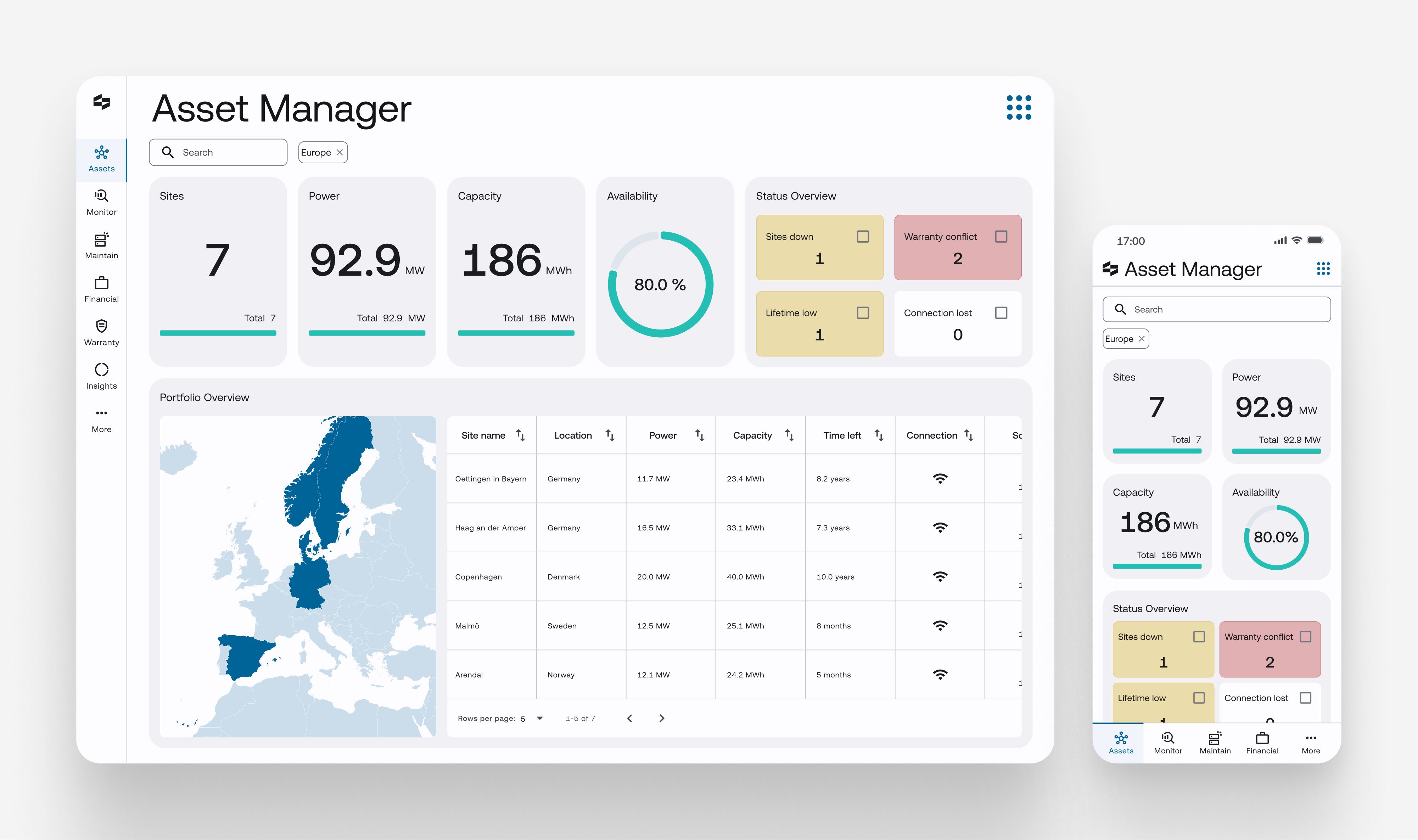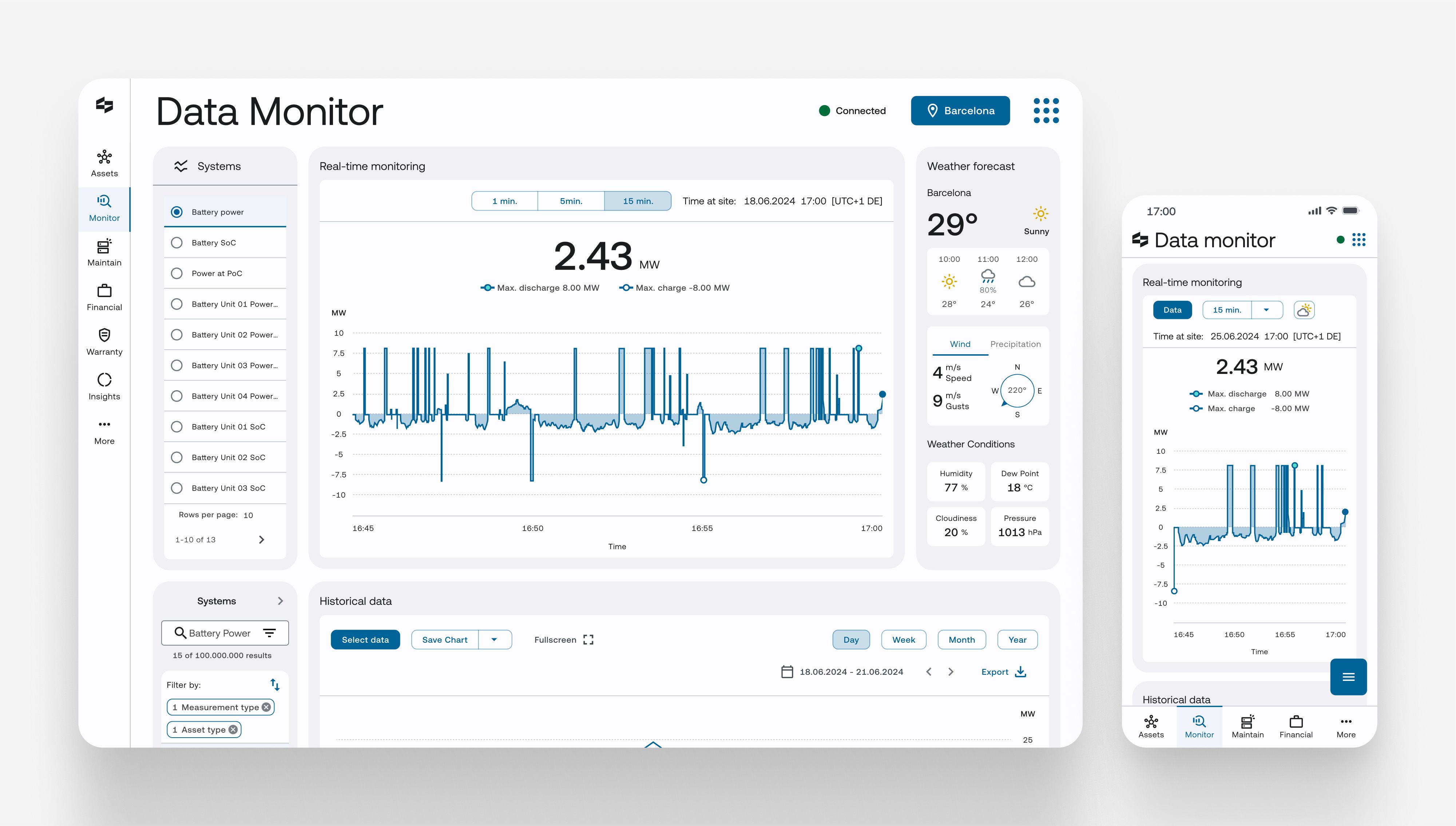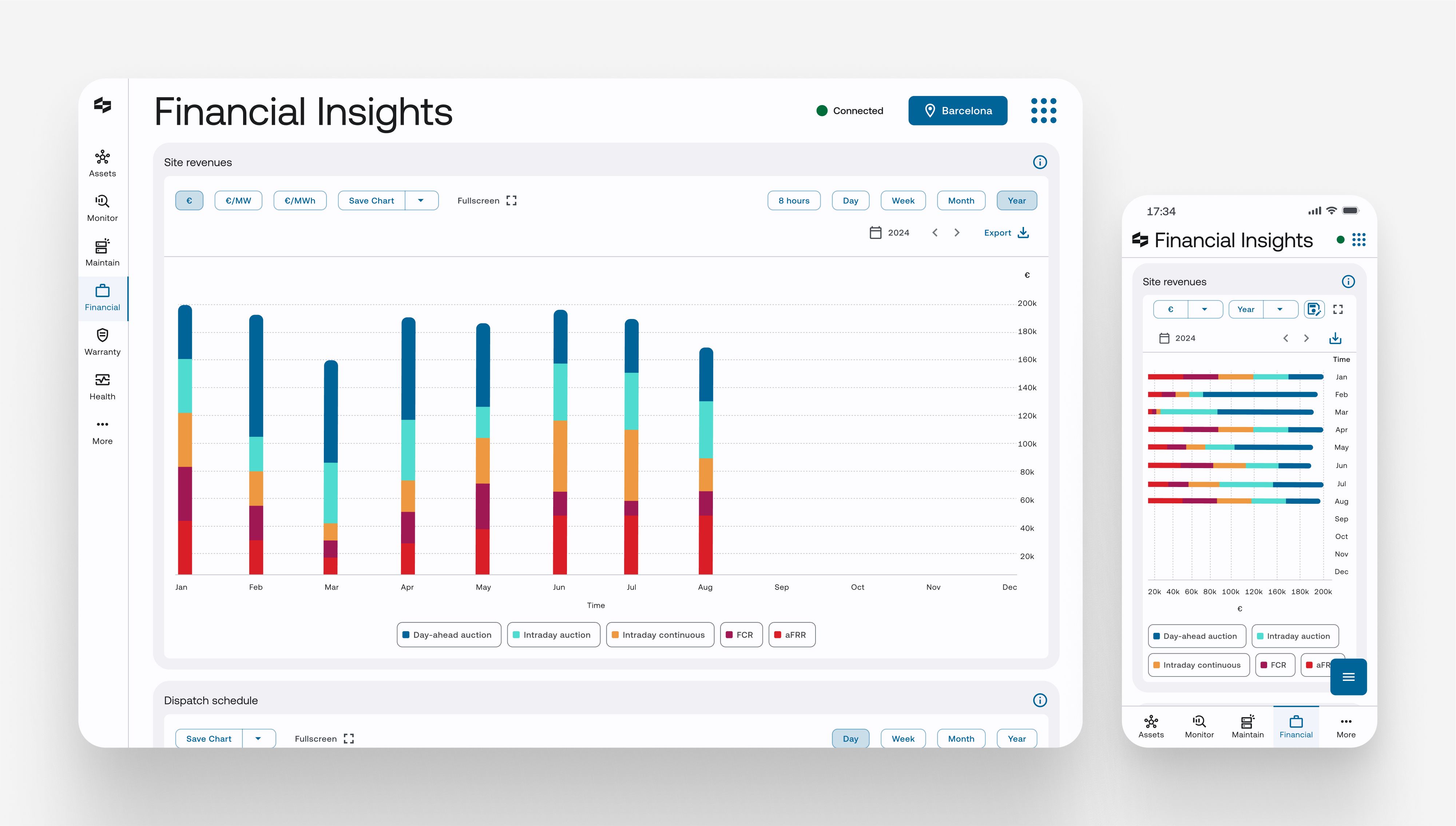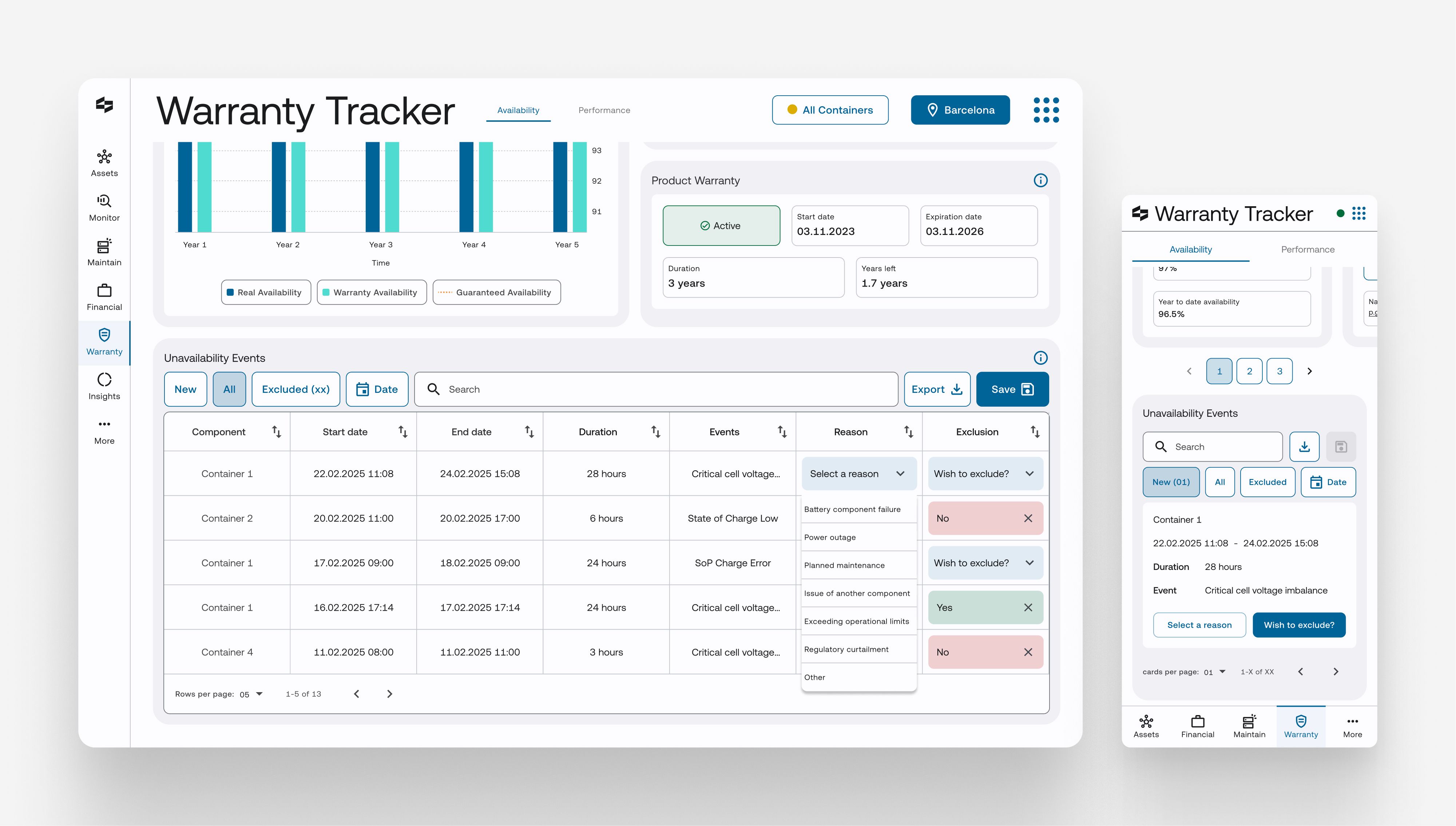
Designers
Luiz Simoes, Marina Ramon
Year
2025
Category
Product
Country
Spain
Design Studio / Department
Design Department

Three questions to the project team
What was the particular challenge of the project from a UX point of view?
The core UX challenge was designing intuitive interfaces for highly technical BESS and renewable energy operations. Even as battery experts, we understood that technical knowledge alone wasn't enough—we had to deeply engage with real users. We conducted extensive research with asset managers, site operators, and C-level stakeholders to map their workflows, goals, and pain points. The biggest hurdle was translating complex system data and real-time monitoring into dashboards that worked for both engineers and business users. We designed clear visualizations, alert hierarchies, and customizable reports. Our system now scales across renewable assets while ensuring consistency, usability, and accessibility.
What was your personal highlight in the development process? Was there an aha!-moment, was there a low point?
Our breakthrough came when we embraced deep user research with BESS operators, uncovering issues like alert fatigue and cognitive overload. This led to redesigns grounded in real workflows. A low point came when standard heuristics—like “visibility of system status” and “recognition over recall”—fell short in complex energy scenarios. We developed new KPI such as “real-time data traceability,” validated through usability sessions with live data. This enabled faster fault resolution and boosted operator confidence. The unique complexity of BESS forced us to move beyond standard UX rules and define evaluation methods tailored to energy systems.
Where do you see yourself and the project in the next five years?
By 2030, global battery capacity will rise from 97 GWh to 442 GWh, driving demand for smarter, more collaborative asset management tools. Cellect will help asset managers optimize their growing portfolios. In partnership with Eurecat and IREC, we merge advanced research with tailored design to increase battery uptime and profitability. One key initiative is developing AI algorithms that predict safety events, enabling preventive maintenance before issues arise. Each innovation is rooted in real user needs and business cases, ensuring our products are both desirable and viable. These efforts accelerate the energy transition and position Cellect as a leader in energy asset management software.


